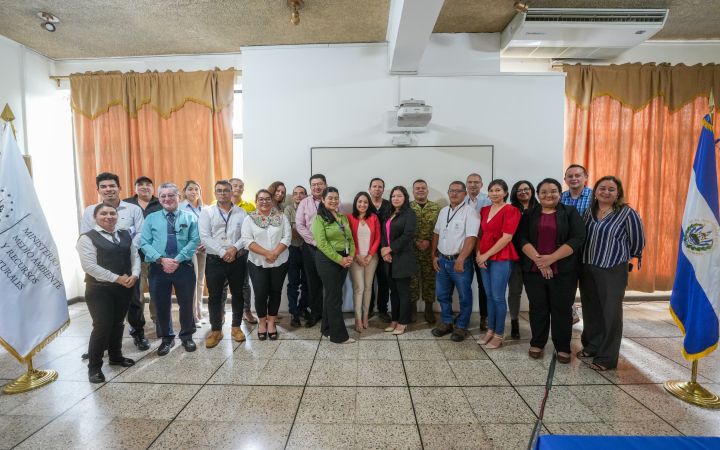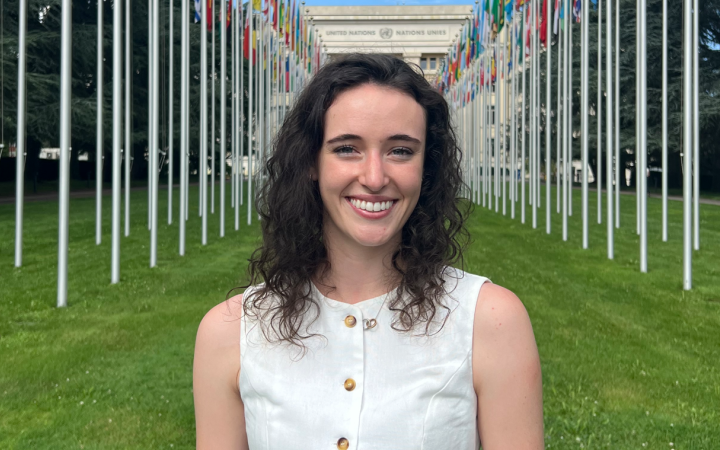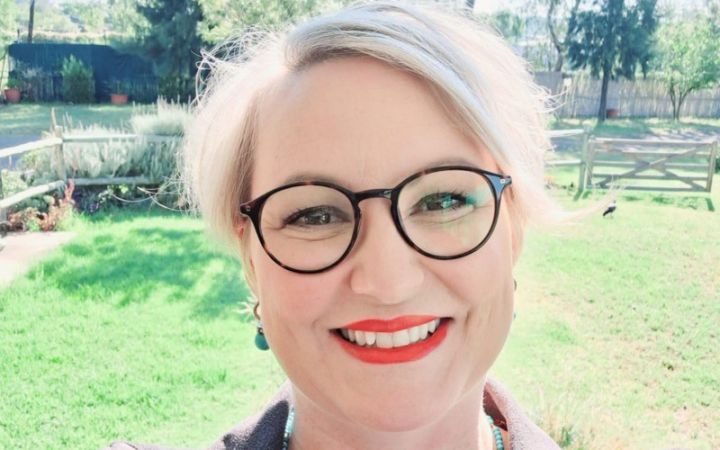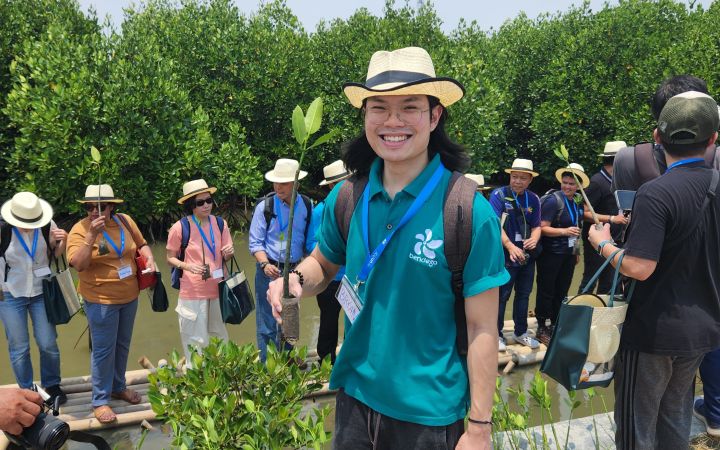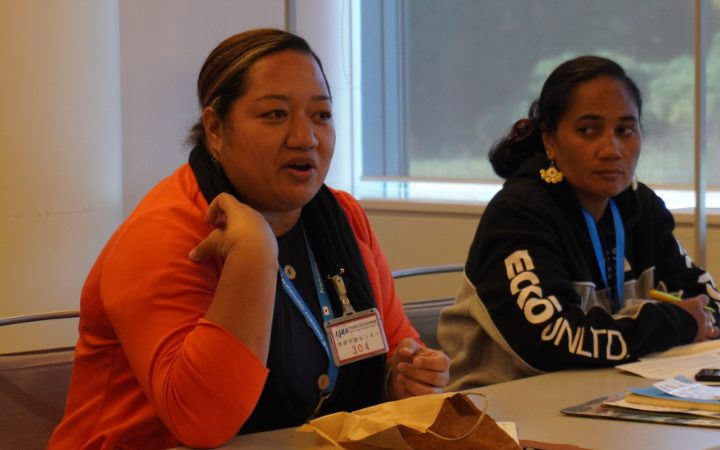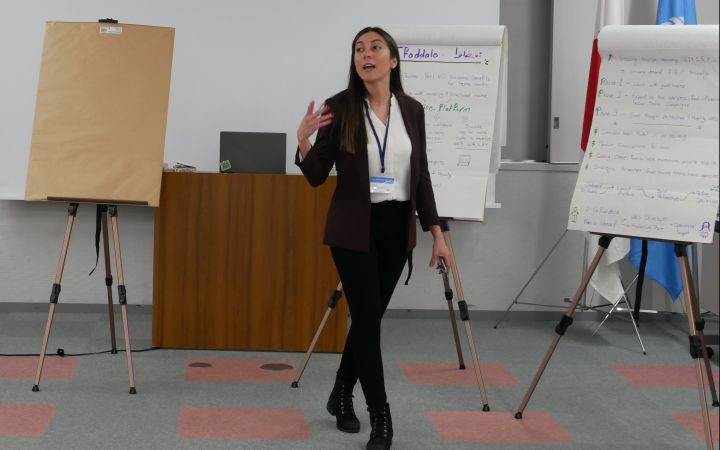Displaying 21 - 30 of 286
Carlos is a chemical monitoring officer in the Chemicals Monitoring Unit of the Ministry of Environment and Natural Resources of El Salvador. His unit focuses on the performance of administrative functions required under the implementation of international conventions related to environmentally sound management of hazardous chemicals and waste, such as the Rotterdam, Basel and Stockholm conventions, to name a few. His unit started working with UNITAR chemicals and waste management programme for the first time in 2023 to implement a globally harmonized system of classification and labelling of chemicals (GHS) in the country. Today, El Salvador has a decree for the implementation of the GHS as a tool for establishing a common and coherent basis for the communication of chemical hazards.
Rawad, a Senior Protection Assistant at the United Nations High Commissioner for Refugees, completed UNITAR’s Executive Diploma in Diplomatic Practice in 2024. Since its inception in 1965, UNITAR’s Core Diplomatic Training has remained at the forefront of the institute, equipping current and aspiring diplomats with greater knowledge and skills on how to effectively and efficiently operate in any multilateral setting. Seeking to pursue a diplomatic career, Rawad enrolled on the eighth edition of the diploma.
Lauren is currently pursuing a law degree at the University of Newcastle. She learned about the UNITAR “She Leads for Peace Summer School” through her former supervisor at work. Initially drawn to the programme to acquire new skills for her future career, she realized that the experience offered much more than she had anticipated, broadening her perspective on women’s leadership in the broader sustaining peace ecosystem.
Cindy is an instructional designer and international trainer. Before joining the “Learning Design and Facilitation Masterclass Series” offered by UNITAR’s Learning Solutions team, she had over six years of engagement with UNITAR as a trainer in topics related to leadership, coaching, communication, and negotiation. Cindy also works full-time as a training and development designer at Unitrade Management Services and is pursuing a degree in instructional design. Clearly, Cindy was not new to the intricacies of training development, however, UNITAR's Masterclass Series provided her with additional skills that have complemented her experience as an instructional designer.
10 April 2025, Hiroshima, Japan - University lecturer Loretta Dilu joined the 2024 UNITAR Leaders for a Free and Open Indo-Pacific: Sea and Human Security training programme with little prior knowledge of sea and human security. However, through her perseverance, she distinguished herself and was selected to advance to the final phase of the programme.
UNITAR’s Division on NCD, Digital Health, and Capacity Building partnered with WHO to modernize global healthcare education by migrating and enhancing over 140 courses. This initiative ensures healthcare professionals, especially in low- and middle-income countries, have seamless access to high-quality, evidence-based learning. By consolidating learning resources onto a unified platform, the project supports SDG 3.4 and strengthens global health systems. The impact has been profound, breaking down barriers to education and empowering health workers worldwide with essential skills to improve patient care.
26 March 2024 Hiroshima, Japan – Indonesia is renowned for its breathtaking natural beauty, but it is also highly disaster-prone and faces environmental challenges. Determined to make a meaningful change, young environmentalist Bryan Sinatra joined the UNITAR Leaders for a Free and Open Indo-Pacific: Sea and Human Security training programme.
26 March 2025 Hiroshima, Japan - Tonga’s rugged landscapes and deep blue Pacific waters have long been both a source of pride for the people of Tonga and a constant reminder of nature’s unpredictable power. For Savelinga Fatafehi ‘O Lapaha Fa’oliu, an assistant geologist at Tonga Geological Services, every day is a commitment to safeguarding her community against the island nation’s natural hazards.
26 March 2025 Hiroshima, Japan – Manchulika Wongchai, Third Secretary of the Peace, Security and Disarmament Division of the Department of International Organization of the Ministry of Foreign Affairs of Thailand, was one of the 15 participants of the UNITAR Hiroshima Nuclear Disarmament and Non-Proliferation Training Programme held in February 2025.
24 March 2025 Hiroshima, Japan – Nathalie Fakher Eddine is a Lebanese entrepreneur with a background in public health, humanitarian relief and disaster management operations. She co-founded a social dining platform that connects home cooks with locals and tourists, allowing visitors to experience authentic Lebanese cuisine through home-cooked meals. Through the platform, she aims to improve the lives of women and families with low incomes while preserving Lebanon’s rich culinary heritage.


